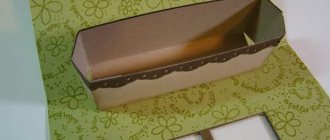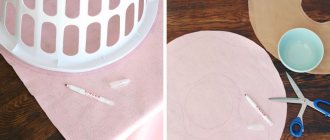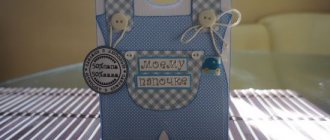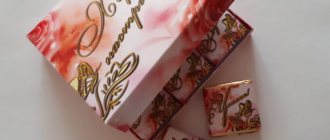Yuri 09.22.2020 1484
Every year, fishermen select different, most interesting techniques in order to catch a large predator. But I found one of the best simple ways - catching pike with a bottle. It resembles the method of fishing with poles and circles, and is excellent for catching trophies.
But with the help of a bottle you can actively catch even medium and small specimens. In order to create such gear, you do not need to spend a lot of time and money.
Features of creating equipment
The main element of this device is a standard plastic bottle. The size depends on the baitfish. You need to tie a fishing line with tackle to the neck, and then wind it around the container.
- Important! In order to fix it securely, you can make a small hole in the plastic rim and pass a fishing line through it.
Before you lower the tackle into the water, unwind more fishing line, and fix the reserve on the bottle so that only the pike can release it at the moment of biting. In order to secure the stock, you can use standard rubber bands for money. Place one in the middle, the second on the neck. At the moment when the pike begins to peck, the elastic band breaks or simply flies off the bottle, after which the predator can take as much fishing line as it needs.
In order to make the tackle more visible to the fish, I painted the lower part with a bright color. You can make it even simpler and place a bright piece of material inside.
For equipment I take the following components:
- weight;
- metal leash;
- large treble hook;
The weight of the load should not be too heavy, since the bottle needs to be sunk, and it must stand vertically and not go into the depths. If desired, the weight can be placed on the fishing line in front of the leash. Thus, the baitfish will move the container around the reservoir as it wants.
But you can also make stationary tackle. In this case, the weight should be placed at the bottom, and the leash with the hook above. This tackle is ideal for catching pike in a body of water with a strong current.
Experienced fishermen use this option for fishing in thickets of grass and snags. It is better to use small fish as live bait, as in other cases it can lead the tackle into the thicket, where it will eventually get entangled.
Tubular vents
Tubular vents have become popular with the advent of various materials on the construction market. Fishermen have come up with a new variety - tubular, consisting of a polymer pipe with a diameter of up to 35 mm and a length of up to 70 mm.
Design
The design of the vent is easy to manufacture:
- two holes are drilled at the top of the tube;
- a length of up to 20 meters and a thickness of no more than 0 5 mm is wound onto a tube;
- a sliding sinker weighing up to 15 g is suspended from the girder;
- is stopped by a rubber damper;
- a swivel with a clasp is tied to the end of the thread;
- a section from a bicycle tube up to 2 cm wide is pulled onto the tube in order to fix the girder in the working position.
The nuances of fishing with a bottle
In order to use this technique, it is better to use a boat. Fishing techniques can be active or passive. In the first case, you should set up the tackle not far from the boat and wait for a bite. In this case, the fish unwinds the line, and the weight is at the bottom, and the bottle lies on the water. As soon as you notice this, immediately go to the tackle, hook and pull out the catch.
If the predator is active, it will rush around the entire pond. In this case, it will not be easy to get the fish. I’ll tell you honestly, this requires experience and skill, since neither a rod nor a reel will help.
- Attention! When fishing, you should be careful, as the fishing line can injure your hand. It is better to use a cord: it will be easier to pull out a large trophy and the risk of injury will be minimized.
Be prepared for the fact that the pike, which was tempted by the bait, will not catch the hook and will leave by the time the fisherman starts hooking.
To my husband
Themed cake
A cake decorated in a theme would be an excellent birthday gift for a fisherman husband. This could be a dessert in the shape of a fish. A confectionery product whose surface is lined with a wafer with a photo or a funny design in a fishing theme. The easiest way out is to buy ready-made sugar figurines in the form of a fisherman, fish, Yu. mermaids and so on, and decorate your signature birthday cake with them.
Fish for glory
Another option for one of the DIY gifts is to prepare your husband’s catch in an unusual, exotic, but very, very tasty way. So that my husband would take such pride in himself! Like, he caught such a yummy thing. It will be especially successful if there are many guests at the table who are able to appreciate and praise this masterpiece. The husband will boast and rejoice at such a smart and quick-witted wife for a long time to come.
Framed photo
With the same intention - to praise a famous fisherman, you can print out a photo of the hero of the day with his catch and frame it in a frame of your own making.
Tags
Carp Buffalo Spring Vobla Asp Winter Crucian Rudd Summer Fishing baits Lower Volga Perch Autumn Fisherman's reminder Lures Bite forecast Fishing in Astrakhan Fishing baits Fishing tackle Fishing secrets Catfish Fishing methods Pike perch Catch Pike
Homemade donkey bite light indicator
A homemade donkey bite alarm from a bottle for night fishing is mounted on a printed circuit board, which should either be etched in ferric chloride, or the contours of the conductive areas should be cut with a knife, then the intermediate foil should be removed using the same knife.
Printed circuit board for donkey bite alarm
A printed circuit board for mounting parts of a homemade electronic light signaling device for fish bite on a donk during night fishing is shown in the picture.
In addition to the printed circuit board, to make an electronic signaling device with our own hands, we will need the following purchased parts and home-made structural elements:
2 batteries (rechargeable tablets)
bite alarm switch
tilt sensor, which closes the electrical circuit in the event of a fish biting on a donkey hook.
LED (bright wide angle)
A board made of one-sided foil getinax or fiberglass with dimensions of 50 by 15 mm.
The average voltage drop on electronic LEDs in red and yellow is 2.0 V with a current consumption of 0.02 A. Typically this value ranges from 1.8 - 2.4 V, and for white, blue and green - 3.0 V (3.0 - 3.5 V).
The printed circuit board for a homemade light electronic signaling device for biting a donkey from a bottle can simply be cut out with a homemade cutter made from a piece of a hacksaw blade for metal.
The main requirement for a printed circuit board: its width, together with the hanging elements, must pass through the hole in the neck of the bottle.
Therefore, the bite alarm design is mounted inside a yogurt bottle with a wide neck.
Making an electronic donkey tilt sensor
To make an electronic donkey tilt sensor with your own hands, take a tube with a diameter of 6-8 mm and cut off a 15 mm long part from it.
Then we cut out the side wall of our sensor - a night bite alarm - from sheet brass or tin, and tin it (photo 8).
After this, we cut out the second side wall of the donk bite sensor from foil fiberglass, but only with a short leg.
In the center of the textolite sidewall, we drill a hole into which we screw a small self-tapping screw, the head of which is moistened with flux and tinned (photo 9). The cap should be smaller than the inner diameter of the tube.
On the other hand, we solder the self-tapping screw to the foil on the PCB (photo 10).
Light sensor for donkey bites from a bottle
Assembling the light bite sensor for night donkey from a bottle is carried out in the following order:
We place a metal tube on the textolite sidewall so that the screw head is in the center and does not touch its walls.
Glue it in this position. The tube for the light bite sensor can be securely glued to the base with PU glue or epoxy resin (photo 11).
Preparing to fill the bite alarm sensor:
We take a copper wire and carefully clean it until it shines. Then we bite pieces of copper wire 10-11 mm long and stuff the sensor with them, so that the wire pieces completely occupy the free space in the tube.
But at the same time, the package of pieces of wire should move freely inside the homemade sensor of the electronic light fish bite indicator (photo 12).
Then we solder the metal sidewall to the tube and seal the sensor of the electronic light bite alarm with glue. The free play of the wire in the sensor should be approximately 3 mm.
* * *
Comments from the site administrator https://99ll.ru/
Looking ahead a little... The operation of the donk bite indicator light sensor in night fishing conditions is very simple. Essentially, a signaling device is a current breaker in an electrical circuit.
If there are no bites, all wire scraps are in the sensor tube and their ends should not come into contact with the self-tapping screw screwed into the side insulator. In photo 13 it is on the right.
The copper scraps will be installed in this position if the rod is slightly swung away from the shore. The donkey bite indicator light will go out immediately.
In addition, the bite alarm sensor on the board with the electronics is mounted rigidly on only one leg (the second contact is soldered through a flexible wire). This can be clearly seen in photo 16.
Therefore, the brass leg can be bent, giving the sensor above the circuit board the required inclined position.
When a fish bites, its jerks through the fishing line will be transmitted to the rod of the vertical post of the donkey. It will begin to oscillate, so the pieces of wire in the tube will begin to move in one direction or the other, periodically closing the gap in the current circuit.
Naturally, for this, the switch for the electronic light bite alarm circuit must be in the on position. This means that at night we either have to be in pitch darkness, or waste battery power and wait for the breaker to trip (blink) when a fish bites.
Making a bite sensor battery holder
Next, we cut out a holder for the bite alarm batteries with our own hands from thin-rolled brass. On the side where the battery cell touches, the contact pad of the holder can be evenly tinned (photo 14).
We bend the sensor holder to fit the batteries. On the outside of the bends, for strength, we pour solder and put insulators made of thin-walled rubber tubes on the legs (photo 15).
Insulators are needed to ensure that the housings of the two battery tablets that power the electronic circuit of the bite indicator light do not short-circuit with each other. The tablet bodies have a “+” potential.
Under the housing cover of the lower battery cell of the sensor, which has a potential with a “-” sign, you also need to cut out a small contact pad.
When installing tablets, make sure that the bottom cover of the battery does not close to the housing.
Important! When soldering the LED of the electronic bite alarm of the donkey for fishing, you should observe the polarity of its connection to the circuit. Otherwise, it will not work, although it is possible that it will not break through.











